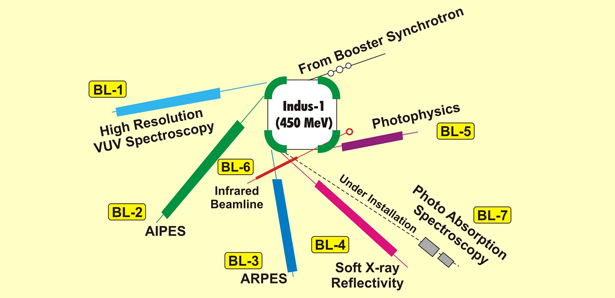Government Funded
Project Title: To study valence band structure, magnetic and optical properties of TM doped TiO2 and SnO2 thin films”
Principal Investigator: Dr. Vandana Rathore, Associate Professor, JLU-SOET,
Funding Agency: UGC-DAE Consortium for Scientific Research, An Autonomous Institution of University Grants Commission, New Delhi, Govt. of India, Indore.
Amount: 7.5 Lakhs, Duration: 3 years
In Collaboration with UGC-DAE CSR, Indore&Indus-1 Beam Line-2, Raja Ramanna Centre for Advanced Technology (RRCAT), Indore.
Brief Summary and Outcomes: The major applications pure and TM doped SnO2& TiO2 materials which are to be synthesized and characterized in the project are solar cells, gas sensors, transparent electrical heaters for windscreens in the aircraft industry, heat reflectors, protective coatings, and light transparent electrodes. Nanostructures offer better options for rechargeable batteries, for instance, including the ones to be used in the next generation of hybrid cars. Doping of such wide band gap materials with transition metal magnetic impurities influences the electronic structure and produces unique magnetic and magneto-optical properties with unparalleled opportunities in the field of spintronics. With the increasing sophistication of devices based on semiconducting transparent coatings, there has been a need for improved quality and understanding of the basic properties of these films. The materials will be prepared in the form of thin films by Pulsed laser deposition techniques and will be characterized by AIPES, XPS, XRD, Raman spectroscopy, AFM, UV-Vis spectroscopy, Magneto-resistance to understand the optical, magnetic, electronic and structural properties of the samples for further advance applications.


Project Title: Design And Fabrication Of Hybrid Electrodes For Energy Storage Application
Principal Investigator: Dr. Mohan Raja, Associate Professor, JLU-SOET
Funding Agency: DST (SERB), Govt of India.
Amount: 29 Lakhs, Duration: 3 years
Summary of Project: The development of energy storage devices with higher energy and power outputs, and long cycling stability is urgently required in the pursuit of the expanding challenges of electrical energy storage. Hybrid energy storage devices (HESDs) combining the energy storage behavior of both supercapacitors and secondary batteries, present multifold advantages including high energy density, high power density and long cycle stability, can possibly become the ultimate source of power for multi-function electronic equipment and electric/hybrid vehicles in the future. In this review, the recent progress made in the field of HESDs, with the main focus on the electrode materials and the matching principles between the positive and negative electrodes are critically reviewed. In particular, the classification and new progress of HESDs based on the charge storage mechanism of electrode materials are re-combed. Batteries run just about everything portable in our lives such as smartphones, tablets, computers, etc. Although we have become accustomed to the rapid improvement of portable electronics, the slow development of batteries is holding back technological progress. Thus, it is imperative to develop new energy storage devices that are compact, reliable, and energy dense, charge quickly, and possess both long cycle life and calendar life. Here, we developed hybrid supercapacitors that can store as much charge as a lead acid battery, yet they can be recharged in seconds compared with hours for conventional batteries.
